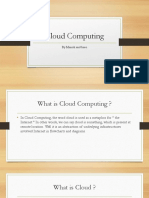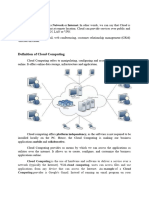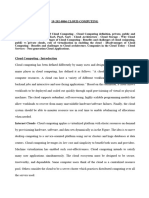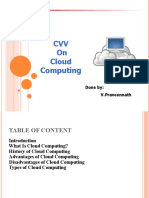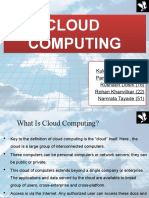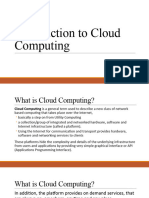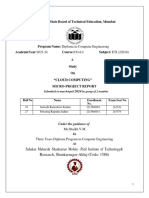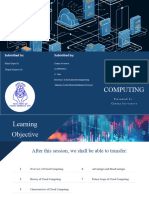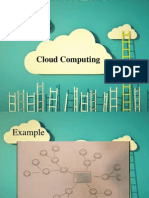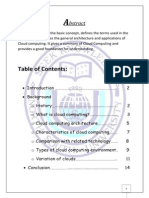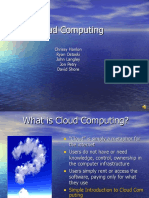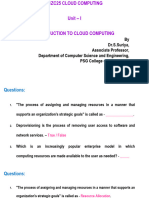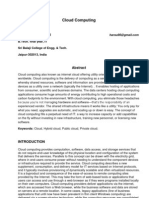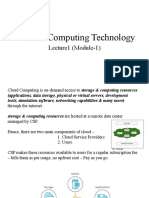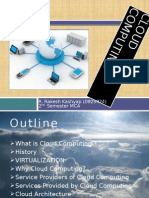0% found this document useful (0 votes)
100 views20 pagesCloud Computing
The document provides an overview of cloud computing including definitions, key concepts, deployment and service models, benefits, challenges, and future trends. It also discusses data centers and how they are used to house critical applications and data.
Uploaded by
Harisankar LalCopyright
© © All Rights Reserved
We take content rights seriously. If you suspect this is your content, claim it here.
Available Formats
Download as PPTX, PDF, TXT or read online on Scribd
0% found this document useful (0 votes)
100 views20 pagesCloud Computing
The document provides an overview of cloud computing including definitions, key concepts, deployment and service models, benefits, challenges, and future trends. It also discusses data centers and how they are used to house critical applications and data.
Uploaded by
Harisankar LalCopyright
© © All Rights Reserved
We take content rights seriously. If you suspect this is your content, claim it here.
Available Formats
Download as PPTX, PDF, TXT or read online on Scribd
/ 20
